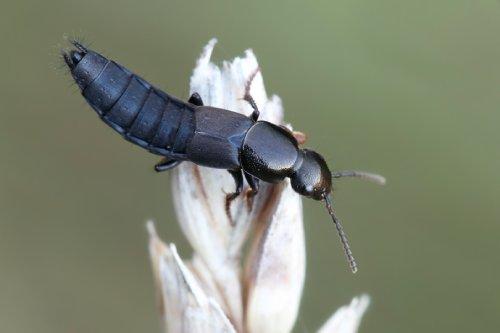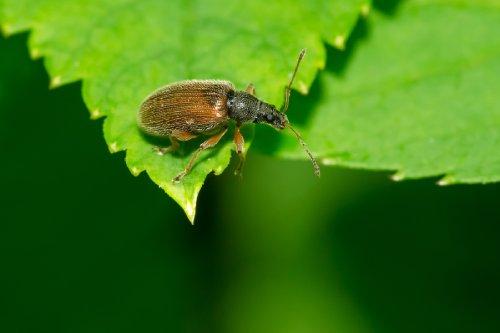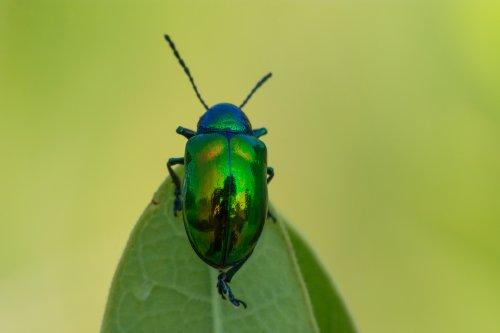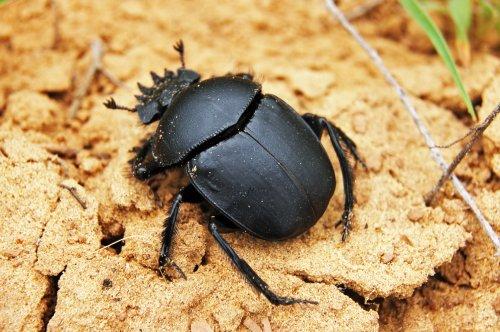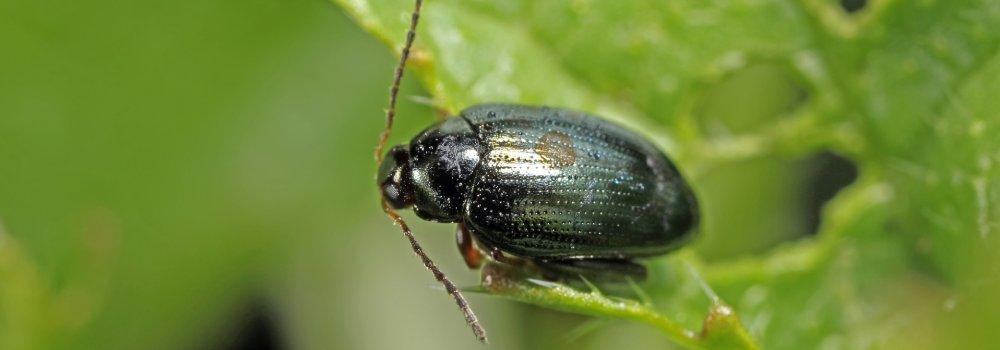
Top Signs of a Beetle Infestation
Beetles are an incredibly diverse group of insects. Found on every continent except Antarctica, these charismatic and often beautiful insects play critical roles in their ecosystems. Learn where to find these important critters, why they’re so important to the natural world, as well as how to prevent them from infesting your yard or home.
What Are Beetles?
Beetles belong to a class of insects known as Coleoptera. Within the class, there are approximately 400,000 different species of beetles. While there is a staggering amount of variety in the size, color, and habitats within the Coleoptera class, there are some commonalities shared by all beetles as well.
Beetles are winged insects that fly in the air to search for food and mates. The vast majority of beetles are omnivores, and a small number of beetle species are carnivores. Beetles have a hardened exoskeleton that protects their wings and internal organs and most also have well-developed mandibles that they use to eat.
Common Types of Beetles
North America is home to thousands of species of beetles. From the rare stag beetle (see image above) to the adorable ladybug, these insects are plentiful across the United States. Below are the five most commonly found beetles in North America:
Rove beetles: You’ll find these small beetles in gardens, feeding on insects like mites and rotting organic matter.
Snout beetles and weevils: Called snout beetles for their long and distinctive snout, these beetles are only about a quarter of an inch long.
Ground beetles: This is one of the most common types of beetle if you live in North America. These garden-dwellers are often found under rocks, logs, and in the earth.
Leaf beetles: This species of beetle includes the ladybug as well as many other tree-dwelling beetles in this group.
Scarab beetles: There are thousands of types of beetles in this group, even in North America. Known for their distinctive silhouette, this group of beetles can have beautiful coloring.
What Do Beetles Eat?
Because of their wide variety of food sources, beetles play an important role in their natural habitats. Beetles that are herbivores or omnivores feast on leaves, bark, and seeds. Many other types of beetles make their meals from animal dung and carrion, helping to break down waste and carcasses. While other insects, like flies, may use these types of materials more for laying eggs than as food sources, beetles are important players in the decomposition process, which aids in the natural cycling of nutrients throughout the ecosystem.
Are Beetles Seasonal?
Most species of beetles found in the United States are alive year-round, although they are more active in the warmer summer months when vegetation is growing and plentiful. The lifecycle of beetles varies greatly depending on the species, ranging from weeks to months.
Are Beetles Harmful To Humans or Pets?
For the most part, beetles are not harmful to people or to pets, with a couple of exceptions. Beetles do not sting, but they can use their powerful mandibles to bite.
There are only three types of beetles found in the U.S. that are capable of biting humans or pets: the blister beetle, the stag beetle, and the longhorn beetle. A bite from a beetle is generally only painful for a day or two, but can cause significant discomfort. Unless the bite causes an allergic reaction, the pain at the site of the bite will go away on its own within a couple of days.
The Asian lady beetle can be toxic to pets, causing stomach upset and potentially even death if they’re ingested in very large quantities.
What Are Signs of A Beetle Infestation?
The most common beetle that causes damage to homes is the carpet beetle. These beetles can do significant damage to upholstered furniture, clothing, carpet, and leather. The carpet beetle larvae are the culprit of this damage, eating fibers when they hatch.
The most common way for carpet beetles to enter your home is through an unscreened window or for the larvae to ride in on something that you bring into your home, like new plants, used furniture, or even pets.
How Do I Get Rid of Beetles in My Home and Yard?
Unless your carpet beetle infestation has gotten out of control, chances are you’ll be able to get rid of beetles with a few DIY steps. These recommendations should kill any beetles or larvae that may be present.
- If you find evidence of damage and you suspect that carpet beetles are the perpetrator, put any infected items in the washing machine that can safely be washed.
- Steam clean or wipe other infected items with vinegar.
If you are still noticing signs of beetles in your home after these steps, you may need to call a professional pest control company to assess the situation. These pro treatments target known spots where carpet beetles hide and nest and will work toward removing them from your home.
How To Prevent a Beetle Infestation
There are a few things you can do to make sure beetles don’t get into your home:
- Take a good look at any new plants in your home to make sure that there are no larvae when you bring them indoors.
- Vacuum and steam any used furniture that comes into your home to get rid of carpet bug eggs.
- Regularly vacuum and clean all carpeted or upholstered surfaces.
Beetles are generally viewed as the more charismatic members of the insect world, with their bountiful numbers and diverse habitats that allow them to live comfortably anywhere in the world. They generally aren’t found in homes, aside from the carpet beetle, preferring to live outdoors instead where food sources are abundant. For the most part, beetles are a healthy and helpful part of the natural world and should be left to do their jobs in peace.
Categories
RELATED POSTS

